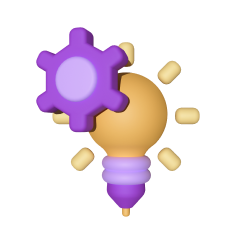The Once Only Hub.Collaborate to build the future of the Single Market
The EU is making it easier for citizens to study, move, work, retire or do business. The Once-Only Technical System will connect EU public authorities, so they can exchange official documents and data at the citizen’s request. It puts into practice the Once-Only Principle (OOP), which states that citizens should not be forced to provide information to authorities if another authority already holds that information in electronic format.
Who's the HUB for?

SDG coordination group
Actors responsible for building and maintaining the Once-Only Technical System between Member States.

Competent authorities
The authorities who must allow their users to retrieve requested evidence using the Once-Only Technical System.

Interested parties
Everyone who wants to learn more about the Once-Only Technical System.
Architectural design of the Once Only Technical System
The Once-Only Technical System is a technical framework for data sharing. Citizens and businesses will be able to request “evidence” to complete administrative procedures (allowing people to study, work, live and retire in other EU countries). The decentralised architecture connects public authorities, so they can exchange official documents and data at the citizen's request.
The citizen or business is identified and, having actively confirmed that the Once-Only Technical System should be used, is shown a list of the types of document that are possible to be retrieved directly from data sources abroad. The citizen will then select which documents they wish to retrieve from the data sources.
Technical documentation
The technical and operational specifications of the Once-Only Technical System , laid down in the Commission’s Implementing Regulation ((EU) 2022/1463) setting out the system, are complemented by detailed, non-binding technical design documents resulting from the common efforts of the Commission and Member States.
Chapter 1
Introduction - High Level Architecture
This chapter introduces the high-level architecture of the OOTS and the key concepts and themes found in the subsequent chapters.
Chapter 2
User Identification, Authentication and Record Matching
This chapter explains how evidence requesters or evidence provider are identified and authenticated when performing a procedure using the OOTS to exchange evidence. This chapter looks at the use and purpose of the eID Building Block and eIDAS attributes in the OOTS to support user identification and authentication.
Chapter 3
Common services
This chapter looks at those Common Services identified by the Member States and European Commission necessary for the proper execution of the evidence exchange process within the OOTS:
- Data Service Directory (DSD)
- Evidence Broker (EB)
- Semantic Repository (SR).
Chapter 4
Evidence Exchange
This chapter introduces evidence exchange in the OOTS, which is based on bilateral exchange between competent authorities.
Chapter 5
Data Models
This chapter looks at the data models that streamline the exchange of evidences, together with a methodology for defining new data models and code lists to ensure the quality of the evidence exchanged between the Member States.
Chapter 6
OOTS Guidance & UX Recommendations
This chapter provides an overview of how the Once-Only Technical System (OOTS) of the Single Digital Gateway (SDG) works and looks at the first set of UX recommendations.
Common services
The common services are developed and maintained by the European Commission and make certain functions available in order to achieve organisational interoperability. These enable the business processes of discovering and getting the required evidence. The Commission provides these common services to allow the proper execution of the evidence exchange process.
Evidence Broker (EB)
The Evidence Broker is an authoritative system that maps specific data sets as evidence types providing specific requirements. An evidence requester consults the Evidence Broker to find which types of evidence can be requested as evidence for a specific evidence subject, considering the subject's location and/or jurisdiction.
Data Service Directory (DSD)
The Data Service Directory acts as a catalogue of Evidence types that evidence providers can provide upon request. It is used in the Evidence Exchange process by the Evidence Requesters to discover the Evidence Providers that can provide the evidence they require.
Semantic Repository (SR)
The Semantic Repository acts as a data portal for the Once-Only Technical System. It stores commonly agreed information models grouped by domain.
Supporting services
Lorem ipsum dolor sit amet, consectetur adipiscing elit, sed do eiusmod tempor incididunt ut labore et dolore magna aliqua.
Testing
The goal of the OOTS Testing services is to assist Member State teams in implementing the Once-Only Technical System (OOTS) as defined in the Implementing Regulation (IR) and Technical Design Documents (TDDs). Information on the available testing services, including the test platform and tools to facilitate testing can be found on the following protected wiki space.
Member State teams that would like to get access are invited to contact their National Coordinator or the EC OOTS Support Desk via mail:EC-OOTS-SUPPORT@ec.europa.eu
Latest news
Collaborate with us
As part of the SDG coordination group
Lorem ipsum dolor sit amet, consectetur adipiscing elit, sed do eiusmod tempor incididunt ut labore et dolore magna aliqua. Ut enim ad minim veniam, quis nostrud exercitation ullamco laboris nisi ut aliquip ex ea commodo consequat.
As an expert in our subgroups
Lorem ipsum dolor sit amet, consectetur adipiscing elit, sed do eiusmod tempor incididunt ut labore et dolore magna aliqua. Ut enim ad minim veniam, quis nostrud exercitation ullamco laboris nisi ut aliquip ex ea commodo consequat.

Service desk
The service desk helps Contributors get access to the Confluence and answers to any technical issues. Contributors are added to specific user groups which allow them to see the dedicated pages of the sub-groups they are working on.
